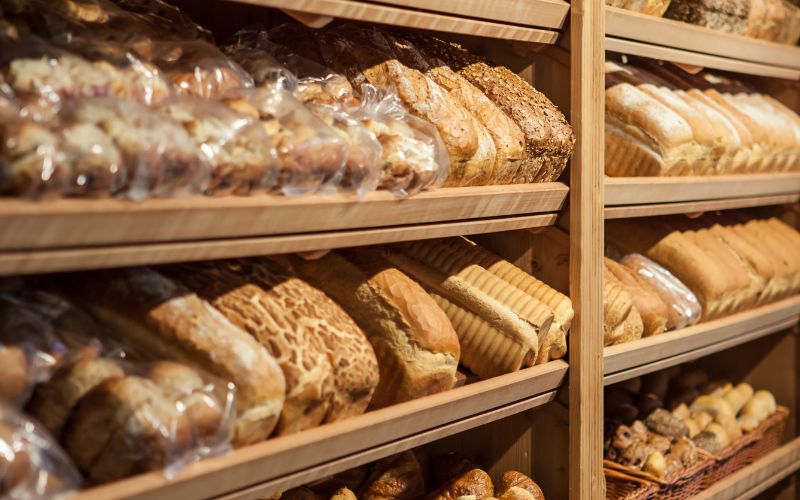The recent heavy rainfall across the UK has raised concerns about potential disruptions in the food supply chain, with bread prices being a particular worry for consumers and retailers alike. This blog post dives into the potential impact of wet weather on wheat production, explores how bread prices might be affected, and offers valuable insights for retailers to navigate this situation.
Understanding the Link Between Rainfall and Bread Prices
Bread is a staple food in the UK, and its price is influenced by a variety of factors, with wheat being a crucial ingredient. Wheat is a rain-dependent crop, but too much rain at the wrong time can harm its growth and yield. Here’s how rainfall can impact bread prices:
- Reduced Crop Yields: Excessive rainfall during crucial stages of the wheat growing cycle can damage crops. Heavy rain can lead to waterlogging, restricting oxygen flow to the roots and hindering plant growth and development. It can also promote the spread of fungal diseases, further reducing yields.
- Lower Quality Wheat: Even if the harvest isn’t significantly reduced, wet weather can lead to lower-quality wheat. Sprouted grains and mould growth can make the wheat unusable for bread production, further tightening supply.
- Increased Transportation Costs: Heavy rainfall can also worsen road conditions, making it more challenging and expensive to transport wheat from farms to processing facilities.
Potential Impact on Bread Prices
If the concerns about reduced wheat yields and lower quality wheat materialise, we could see a rise in bread prices due to the following factors:
- Supply and Demand: A decrease in the overall supply of wheat due to weather events can lead to a situation where demand outstrips supply. This basic economic principle can drive bread prices upwards.
- Increased Production Costs: Even if the yield isn’t significantly impacted, the need to remove damaged grains and manage fungal diseases can lead to higher production costs for wheat farmers. These increased costs might be passed on to consumers through higher bread prices.
- Global Market Fluctuations: The UK imports a portion of its wheat. If wet weather affects wheat production globally, it could have a ripple effect on international wheat prices, impacting the cost of imported wheat and ultimately affecting domestic bread prices.
What Retailers Need to Know
While the extent of the impact on bread prices is yet to be determined, retailers should be prepared for potential changes. Here are some key strategies retailers can implement:
- Stay Informed: Monitor updates on the wheat harvest and potential disruptions in the supply chain regularly. Reliable sources include industry publications, government reports, and information directly from Food Wholesalers.
- Diversify Suppliers: Building relationships with multiple wheat or bread product suppliers can mitigate the risk of overly reliant on a single source that weather events might impact.
- Communicate Effectively: Maintain open communication with customers. Be transparent about potential price increases and offer explanations for the changes. This transparency can build trust and loyalty.
- Explore Alternative Bread Products: Consider stocking alternative bread products like bagels, wraps, or flatbreads. This can provide consumers with options even if traditional bread prices rise.
- Optimise Inventory Management: Revise inventory management strategies to account for potential shortages. Focusing on a “just-in-time” approach or strategically increasing stock levels for key bread products can help navigate potential supply disruptions.
- Negotiate with Suppliers: Leverage Quayside Wholesale’s bulk buying power and negotiation skills to secure competitive prices on bread and bread products, even if there are overall market price fluctuations.
Building a More Resilient Food Supply Chain
While weather events are inevitable, retailers can take steps to build a more resilient food supply chain. Partnering with reliable wholesalers like who prioritise diversification in their sourcing practices can help mitigate the impact of weather disruptions.
Additionally, exploring locally sourced bread products whenever possible can shorten supply chains and reduce reliance on long-distance transportation networks that might be impacted by extreme weather.
Read More: Expecting Retail Sector Food Shortages in 2024: What to Expect and How to Prepare
Conclusion
The potential impact of wet weather on bread prices highlights the interconnectedness of the food supply chain. Retailers, wholesalers, and consumers must communicate openly and work together to navigate these challenges.
Retailers who stay informed, plan proactively, and leverage strong partnerships with wholesalers will be better positioned to ensure a consistent supply of bread and other essential food items for their customers, even in the face of weather-related disruptions.





